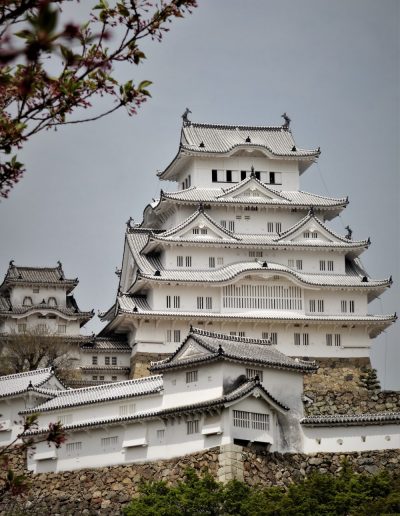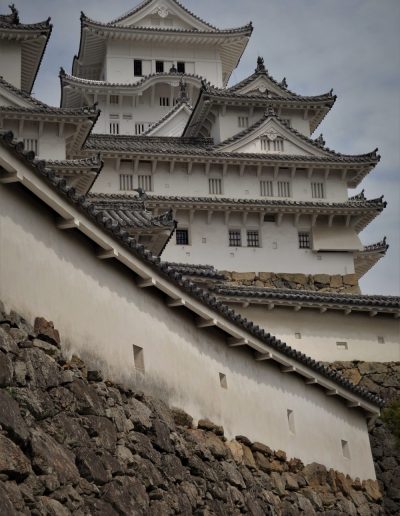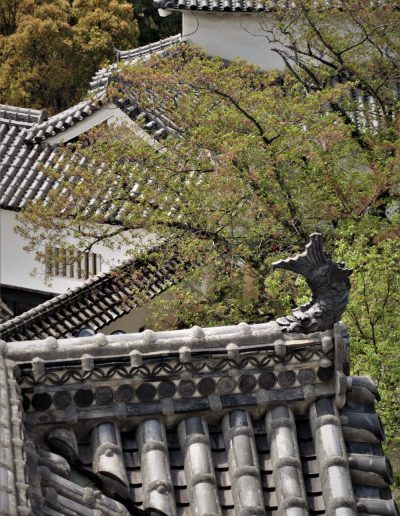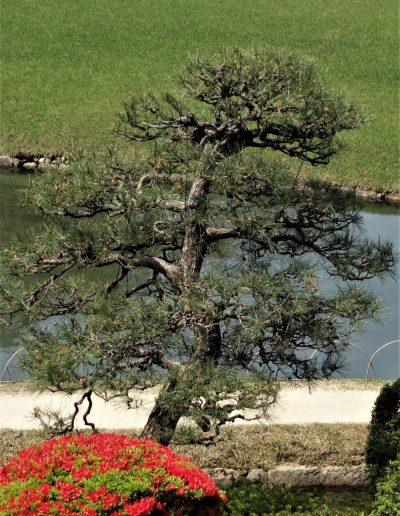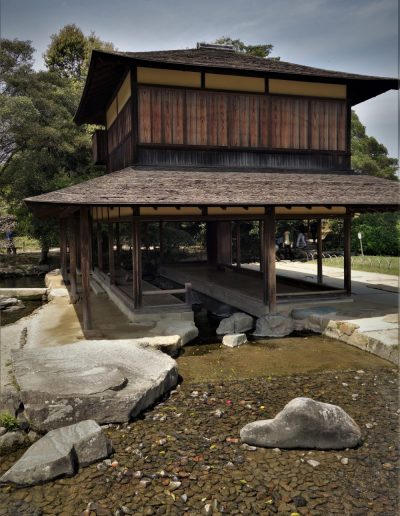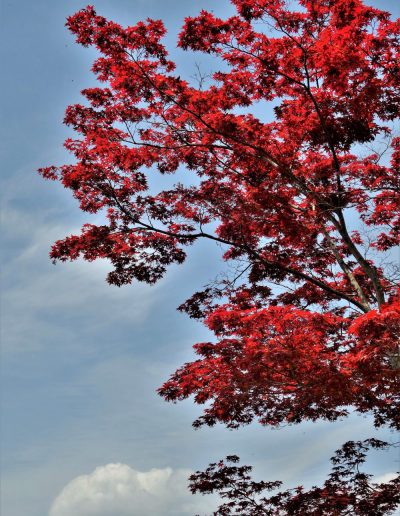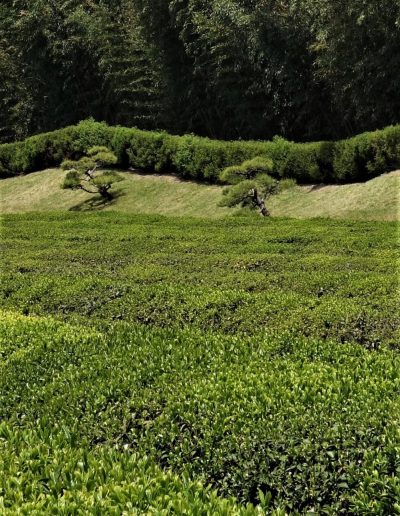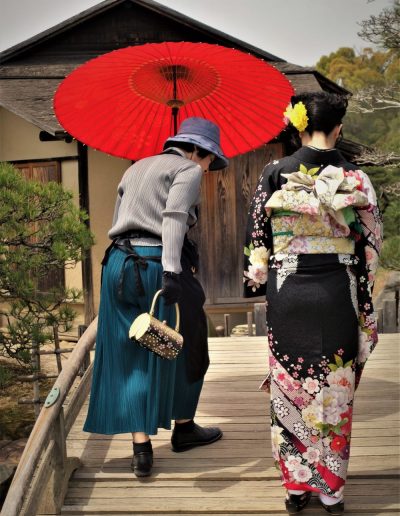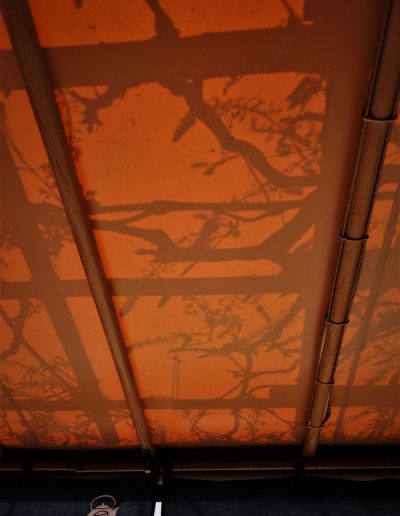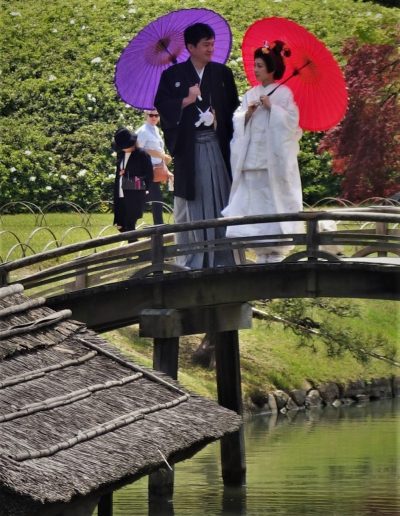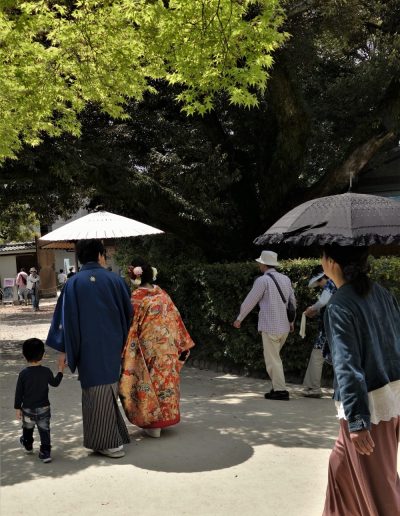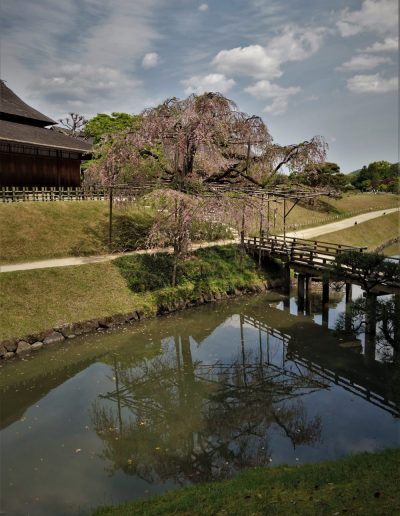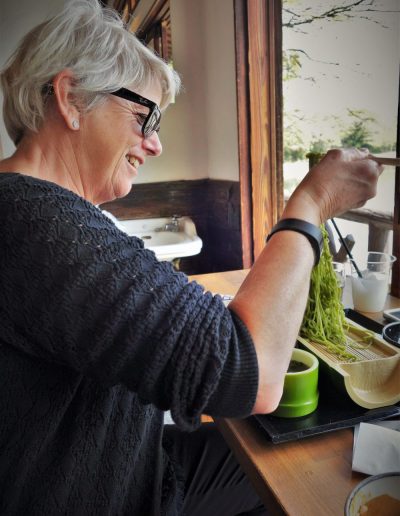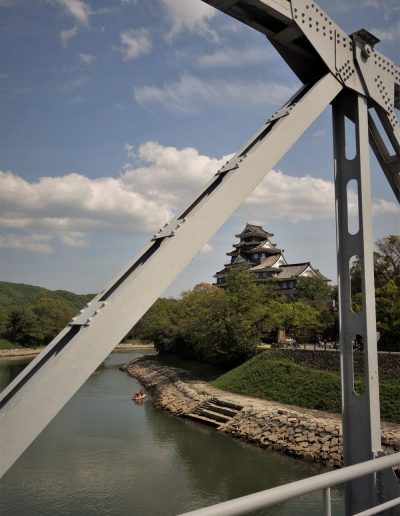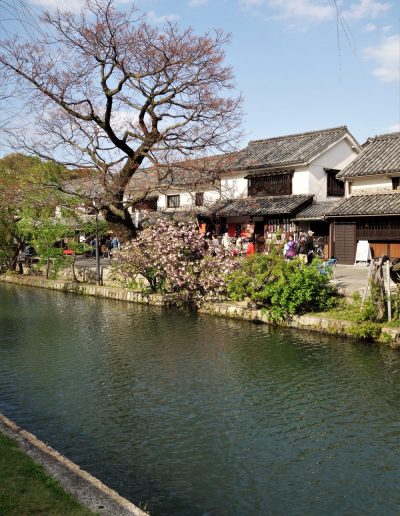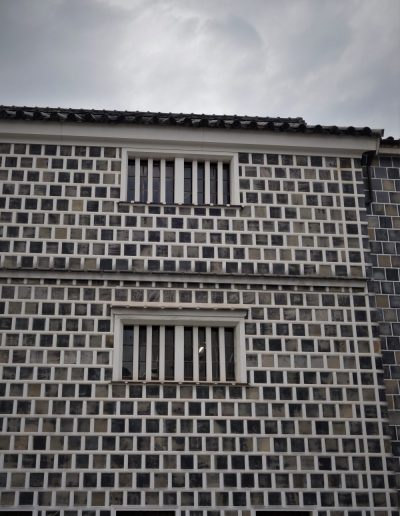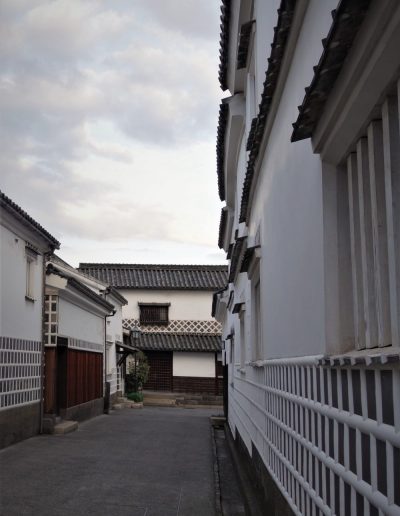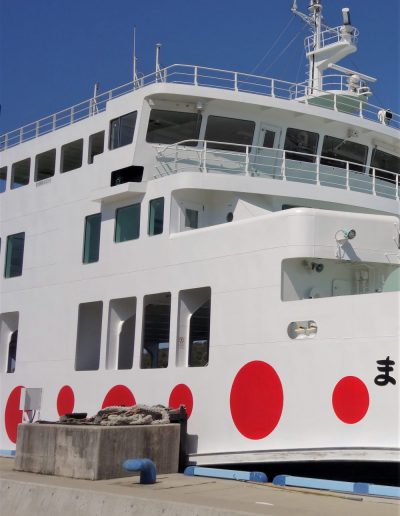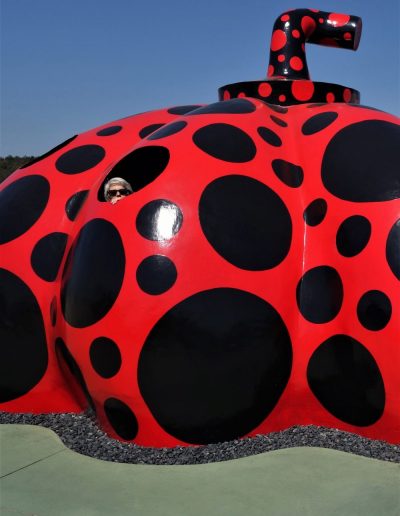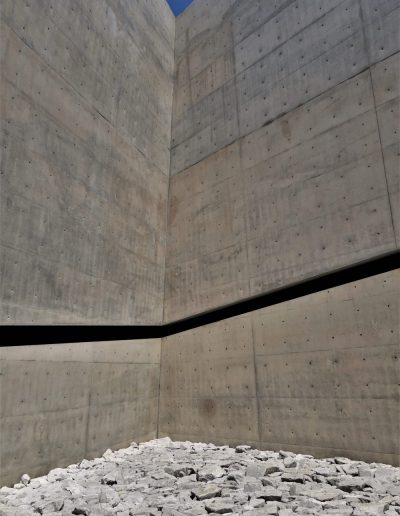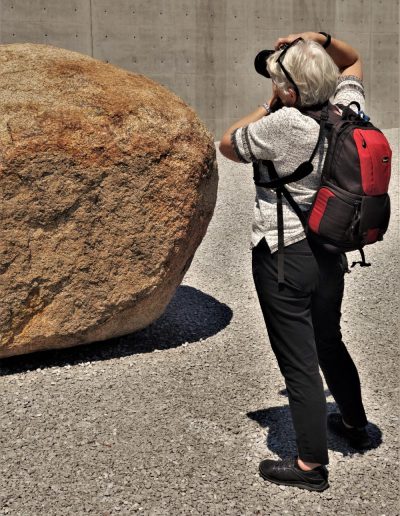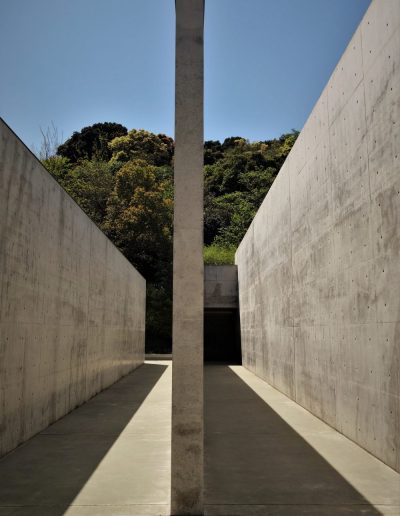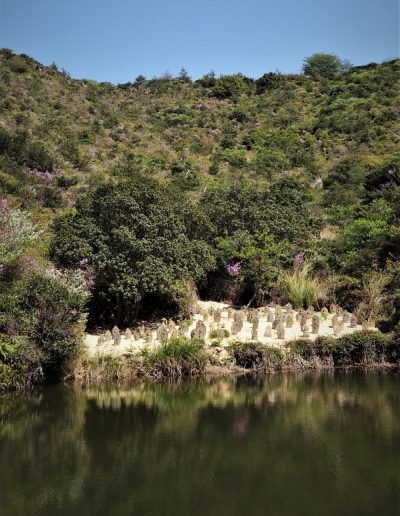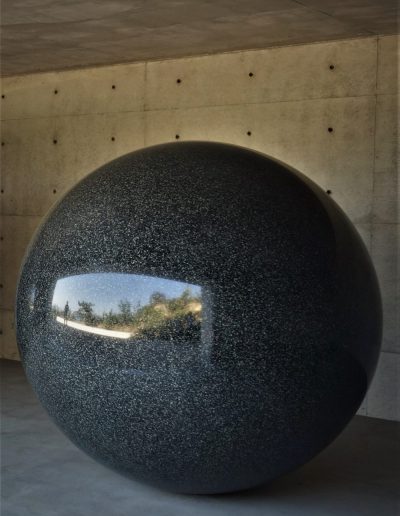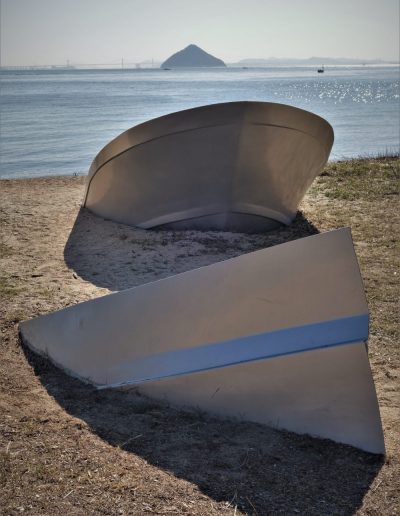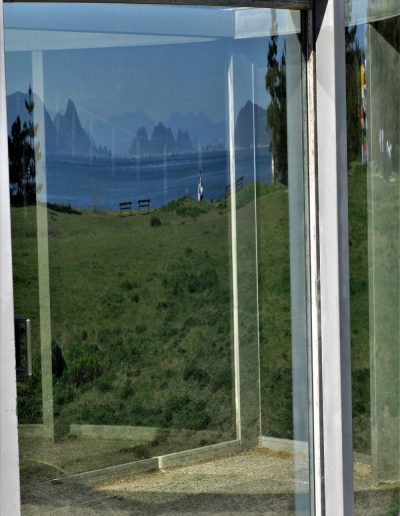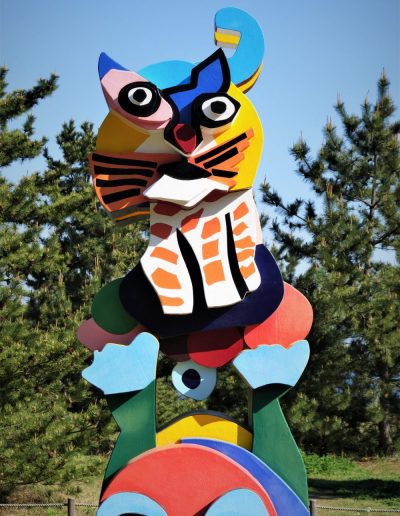- We used the baggage service to send our big bags from Kinosaki to Okayama, freeing us to make best use of the transit day by visiting the World Heritage Himeji Castle.
- So many buildings in Japan have been destroyed by fire, earthquake and war. Himeji-jo is the finest surviving example of early 17th C Japanese castle architecture. It comprises 83 buildings and is a masterpiece of construction in wood, white plastered earthen walls, and multiple roof layers.
- We had four nights in Okayama and it was an excellent base to explore an interesting region. It does however have one major attraction of its own in Koraku-en, one of the three most beautiful gardens in Japan.
- We visited Koraku-en on a glorious spring morning, spending several hours exploring it to the full. Numerous wedding parties were taking photos, providing additional splashes of colour.
- Kurashiki is picturesque town with historic warehouses lining an old canal, just 15 minutes southwest by train from Okayama. We went there twice in the afternoon / evening. It is quite touristy but we found the quality to be high.
- This area is known for a type of pottery called Bizen. It is very hard, reddish-brown color, and doesn’t have a glaze, though it does have distinctive markings resulting from firing in a wood-burning kiln. Kurashiki has a number of very nice Bizen pottery galleries and we bought four pieces that have subsequently been used and admired on a daily basis.
- One day we visited the ‘art island’ of Naoshima. Up to the 1980s this was a fishing community struggling with declining catches from the Seto Inland Sea. Around 1990 the Benesse Corporation, which is in the language schools business, decided to build a series of museums on Naoshima to house its growing collection of modern art. It chose the star architect Tadao Ando to design the major buildings. Naoshima is now a world renowned art travel destination.
- We caught the train from Okayama to the port town of Uno then hopped on a ferry to Miyanoura on Naoshima. Yayoi Kusama is one of the artists featured on the island and her red pumpkin greeted us (then her yellow pumpkin farewelled us – see below).
- We walked from Miyanoura to the extraordinary Chichu Museum. It only has three artists featured. Claude Monet, Walter de Maria, and James Turrell. Tadao Ando’s building is simply stunning.
- We walked on to the Lee Ufan Museum, housing paintings and sculptures by the South Korean artist Lee Ufan in another sensational Tadao Ando building. ‘Sublime’ is overused as an adjective, but I can think of no better word to describe Ufan’s minimalist brushstroke paintings.
- We walked on to the Benesse House Museum, admiring Tsuyoshi Ozawa’s ‘Slag Buddha 88’ installation and checking out the beach and views across to Shikoku along the way. The Benesse Museum has a diverse collection. We particularly liked the works by David Hockney, Yukinori Yanagi, and Richard Long. And Tadao Ando’s building.
- Below the museum a number of amazing outdoor works dot the coastline. ‘Seen / Unseen, Known / Unknown’ by Walter de Maria, Shinro Ohtake’s ‘Shipyard Works’ sculptures, Dan Graham’s ‘Cylinder dissected by plane’, Karel Appel’s ‘Frog and Cat’, and Yayoi Kusama’s now iconic yellow pumpkin to name a few.
- We were out of time at this point so caught the bus back to Miyanoura to pick up a ferry and head back to Okayama. We had a fantastic day on Naoshima and would liked to have stayed for longer. We hope to go back again and if we get the chance we’ll spend a night or two on the island.
- Footnote – As Tasmanians, Naoshima had a lot of resonance for us. It clearly influenced David Walsh in building his Museum of Old and New Art (MONA) in Hobart, which opened in 2011. It was interesting to feel such a stong connection through the common languages of art and architecture.
- Another day we did the Kibi Plain Bicycle Route. Caught the train to Bizen Ichinomiya, picked up some bikes and spent the day following a signposted route to Soja where we dropped off the bikes and caught the train back to Okayama. It was a fun day out.
- After checking out the nearby Kibitsuhiko-jinja (wedding in progress), we cycled on to Fukudenkai Temple which we found very interesting. There is a big ship anchor in the main temple area, a lovely open-sided wooden hall, and a bizarre mound of seven million cattle nose rings paying homage to the animals that have died to feed to the Japanese people. Next stop was Kibitsu-jinja which dates from 1425. It has long, covered arcades radiating from the central complex, and a lake area with tree branches supported on poles so that they grow out over the water. We stopped here for lunch.
- Having only covered about 20% of the journey by lunch time we had to pick up the pace in the afternoon. The 5th C burial mound called Tsukuriyama-kofun is impressively large, standing out as a small hill in the flat fields. Surprisingly it had no protection, singage, or intepretation, and was absorbed into the agricultural landscape. Last stop was Bitchu Kokobun-ji which has a beautiful five-storey pagoda.

